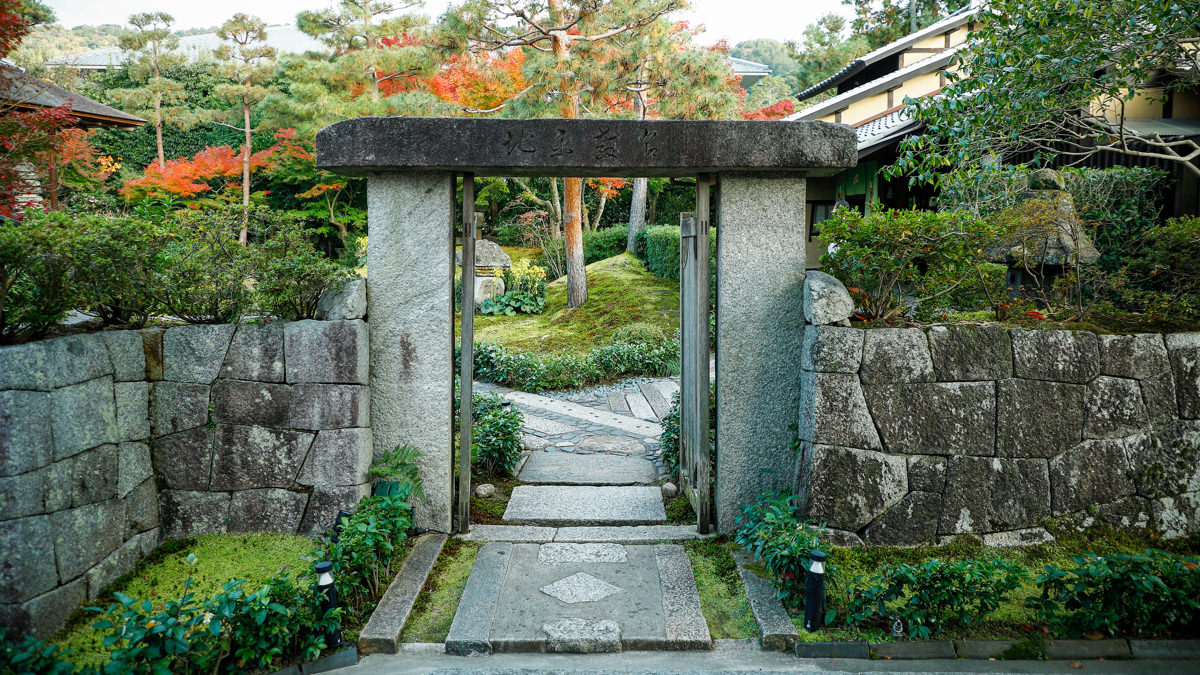
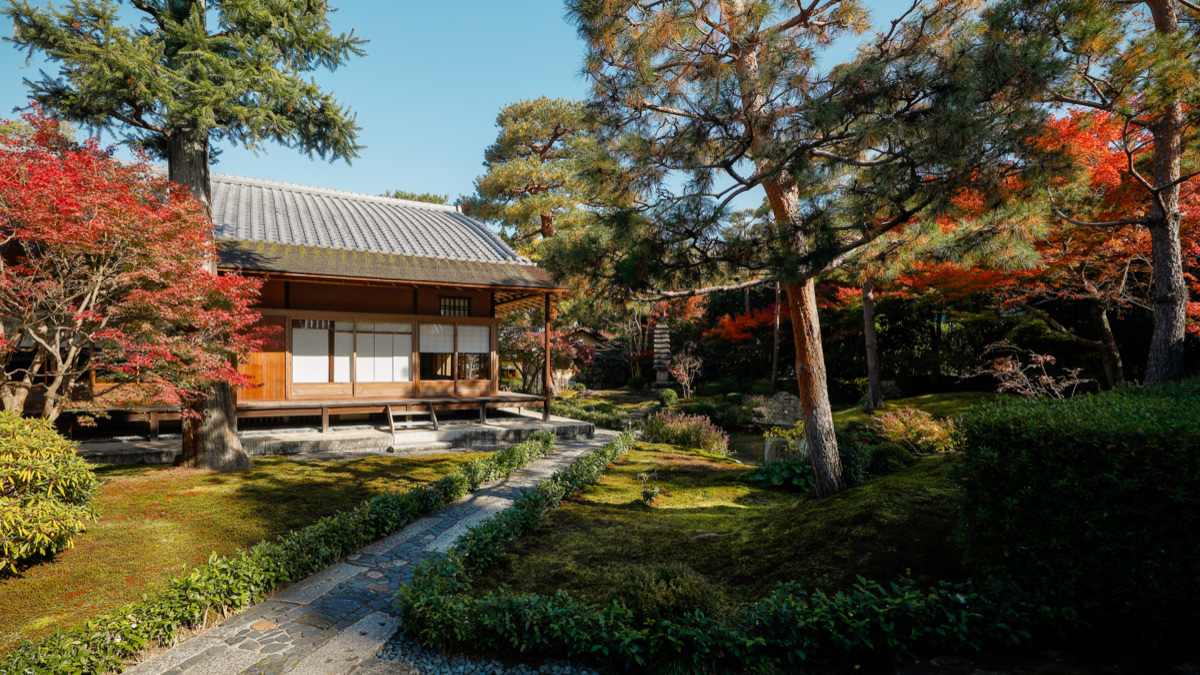
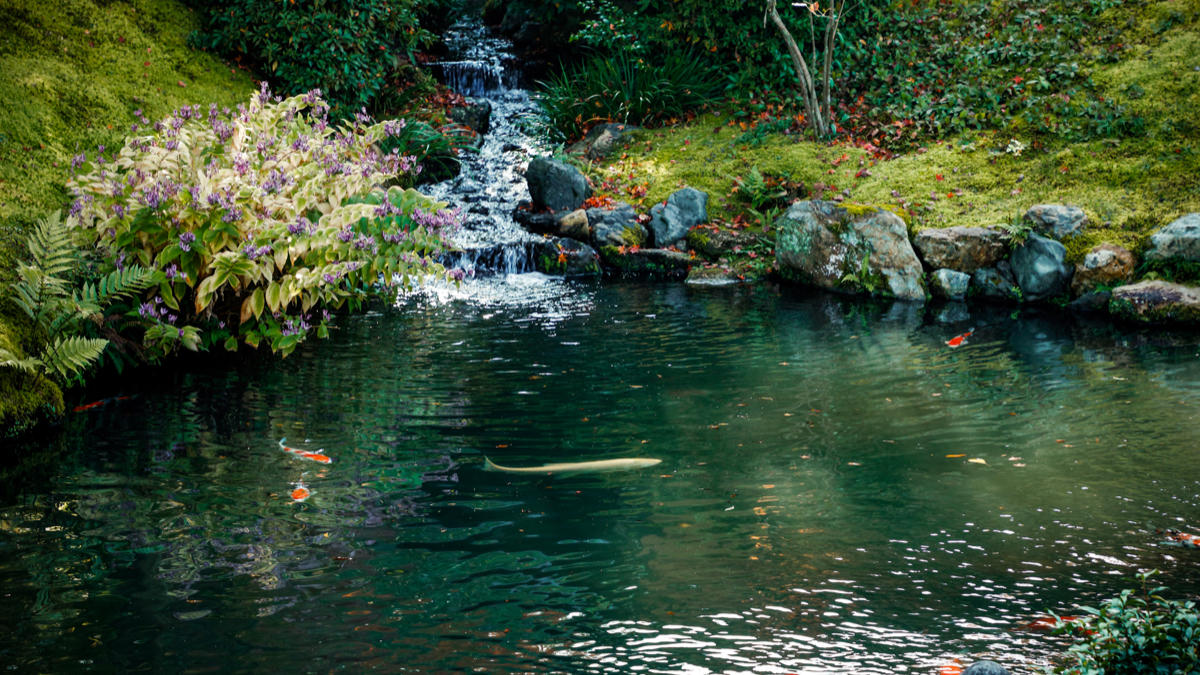
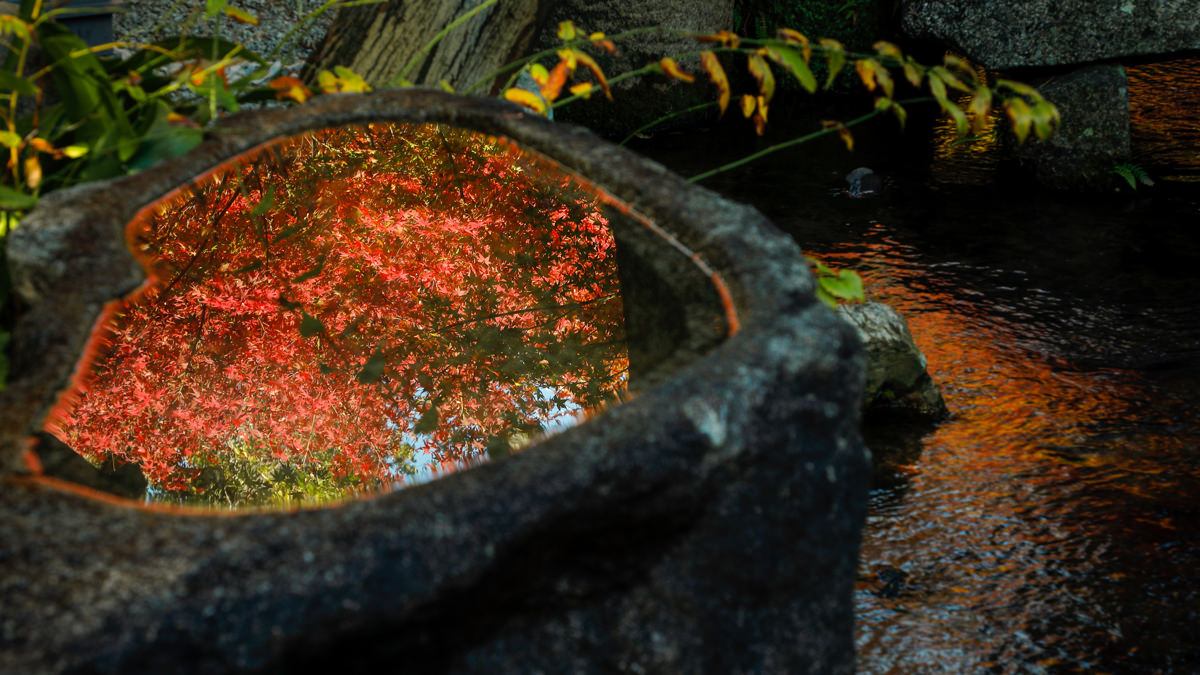
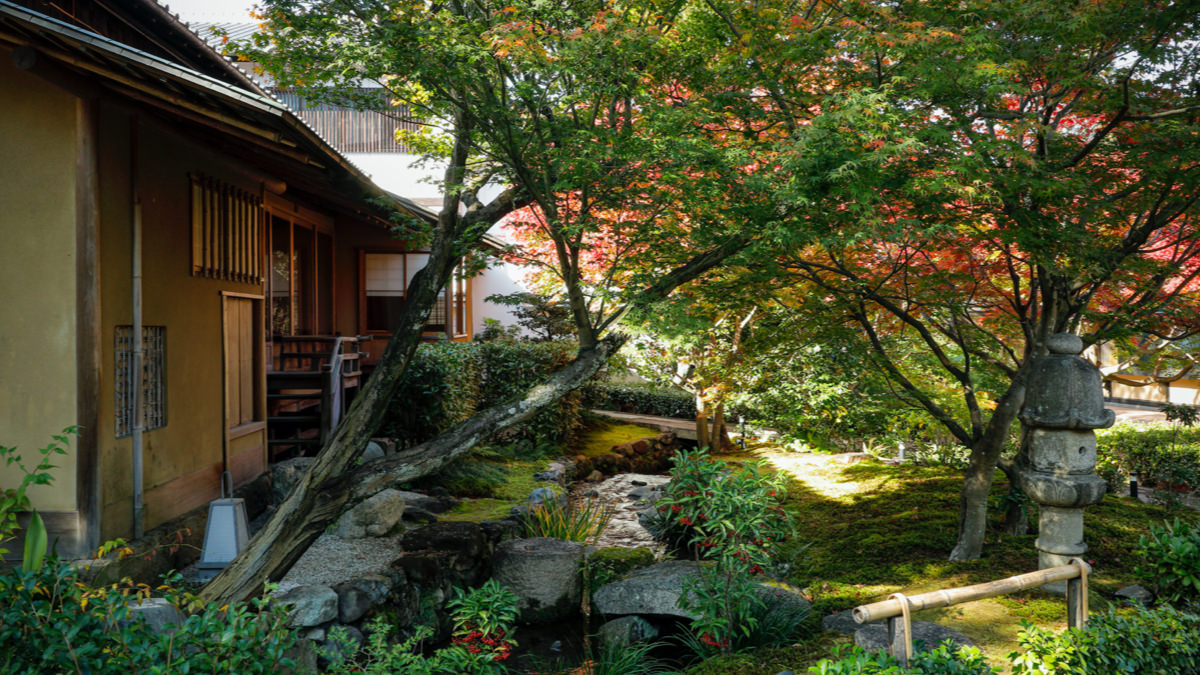
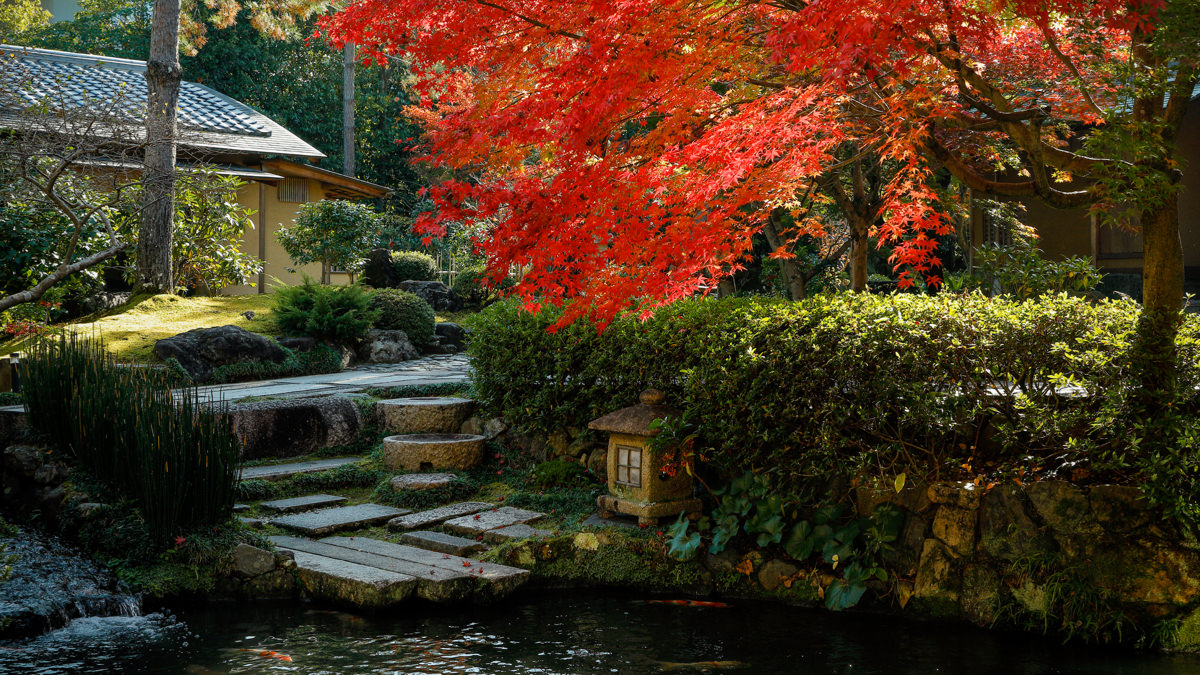
When you pass through the stone gate reading "Meikyo Rakuchi," you'll find a garden that stretches for 3,960 square meters. Here you can admire the changing of the four seasons visible in the garden plants.
When lit up at night, the garden appears magical in a different way than it does in the daytime.
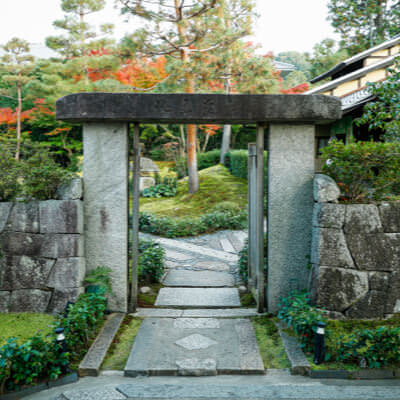
Registered together with the main study itself as a National Tangible Cultural Property, this stone gate is engraved with four characters regarding "meikyo rakuchi" (literally, "paradise of great teaching"). This phrase originates from the words "meikyo no uchi, onozukara rakuchi ari," from the "Book of Jin" (a Chinese document detailing the history of the Jin Dynasty), meaning, in more simple language, "There is a joy in teaching the ways in which people ought to behave."
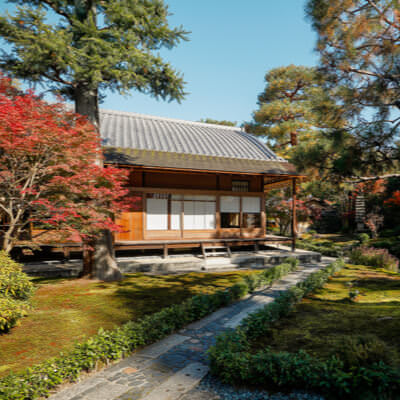
You'll hear the soothing sound of the babbling stream as the garden with its strolling paths appears.
Almost as if you've traveled back in time, you can enjoy the relaxing atmosphere of the garden, interwoven with a sense of something outside the everyday.
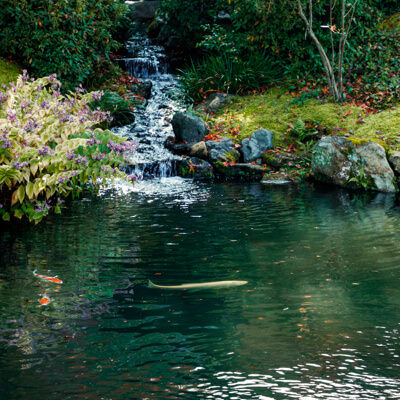
Flow from the pond visible at the front (which is shaped like the Chinese character for "heart"), the small river, herbal pond, and Ryotei Pond are inhabited by brilliantly colored carp, Japanese freshwater crabs, and the other various other creatures under the water that support their lives. It's said that long ago, giant salamanders called this home, too...
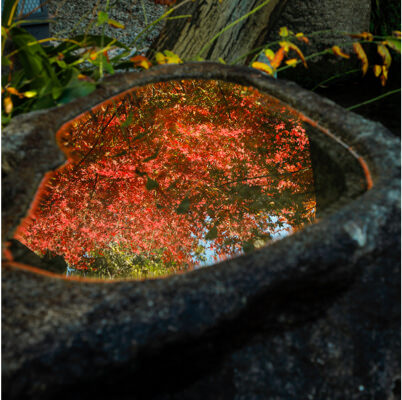
It's said that many different types of herbal plants were once cultivated along the banks of the stream that flows through the garden here, so it was not just a beautiful garden, but a practical one as well.
There are various theories about the stone basin in front of the study's tea room, regarding whether it is in fact a washing basin (to wash one's hands before entering the tea room), or whether it was a mortar for the herbs.
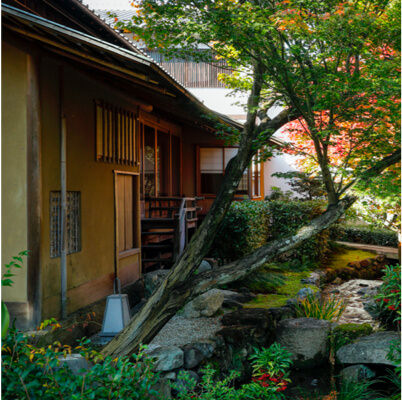
This garden has been carefully designed so that simply changing the angle at which you look at it a little bit brings out a different sense of the garden altogether.
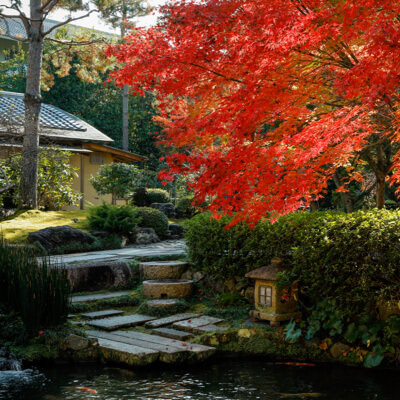
According to the "Records of Junsei Sho-in," penned by three brothers in 1869, in addition to medicinal herbs, tens of fruit trees were also cultivated here, and it said that in the grounds here they compiled a traditional series of "eight picturesque views."
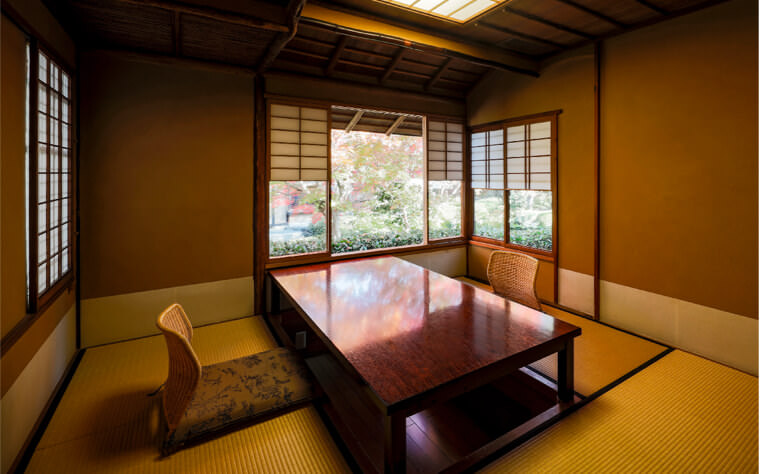
Junsei Sho-in, located on the Junsei premises, is a medical school that appeared during the Edo Period (1903-1868), and is now a national registered cultural property.
The building interior is a dining space, perfect for enjoying a quiet meal with a small group.
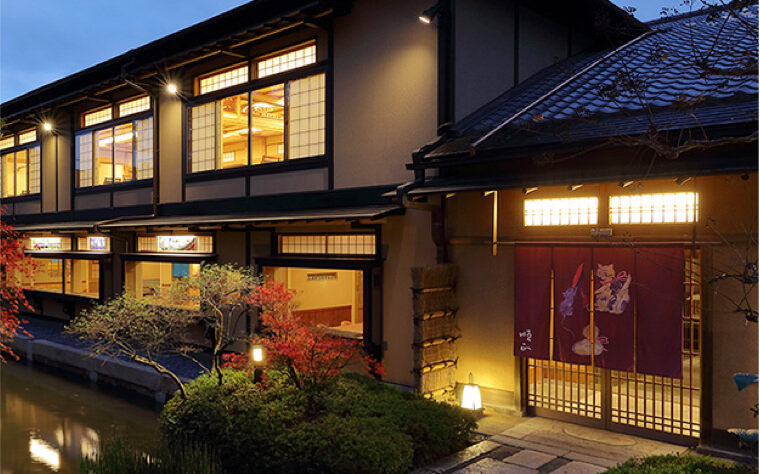
In the Ryotei-kaku pavilion at the rear of the garden, you can relax looking out on the garden as you enjoy your meal.
Although the building is traditionally Japanese in style, chair seating, rather than floor seating, is primarily offered inside.
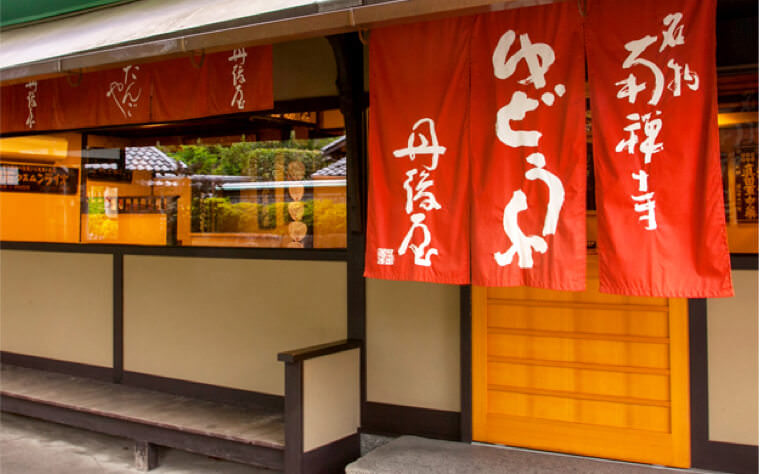
A place to enjoy some casual dining.
Tango-ya is filled with charming old wooden signboards.
In Sousou-an, the scenery jumps into the room through the wall-sized window.
Each building has a completely different atmosphere.
